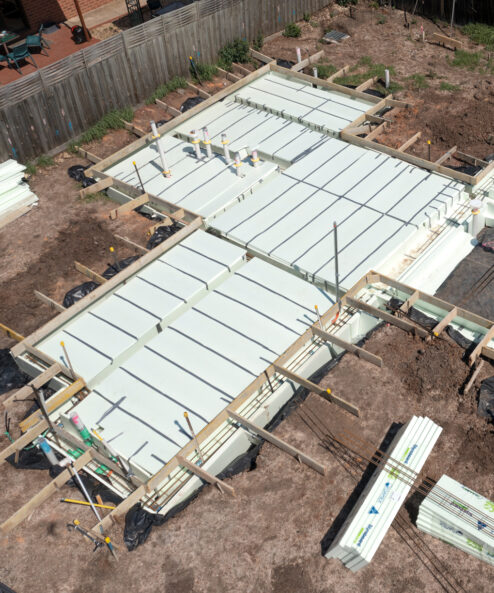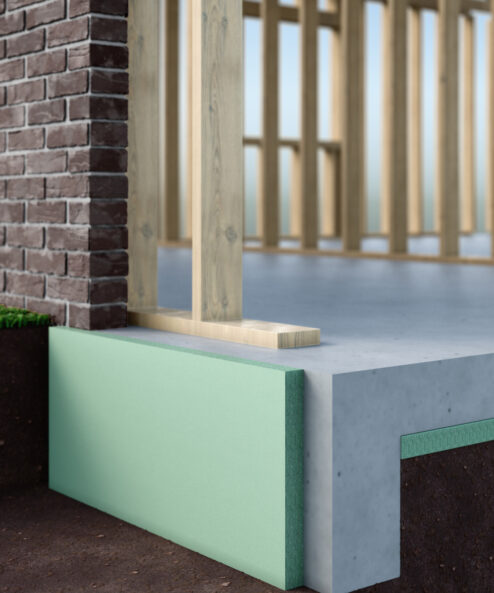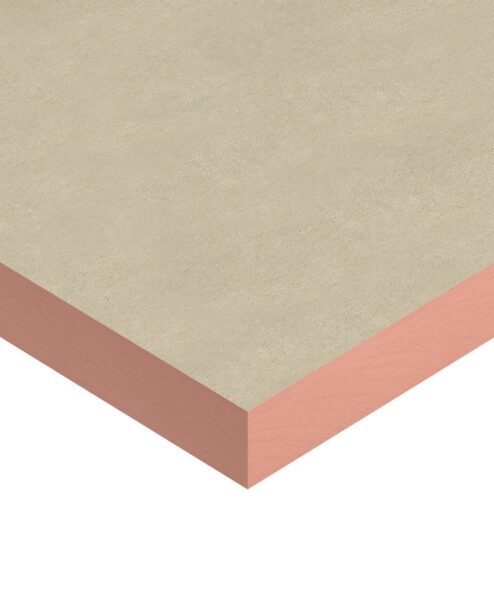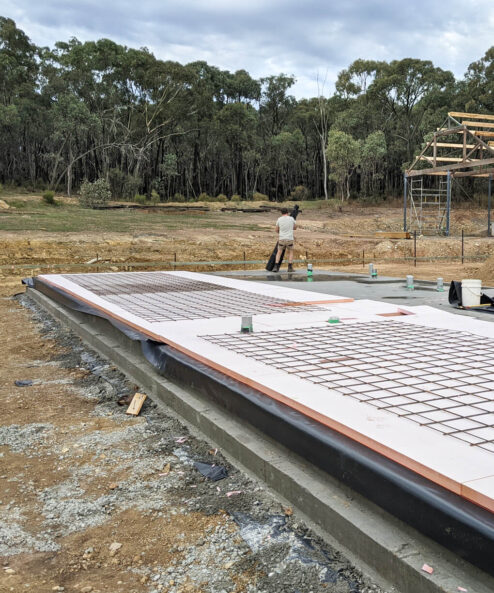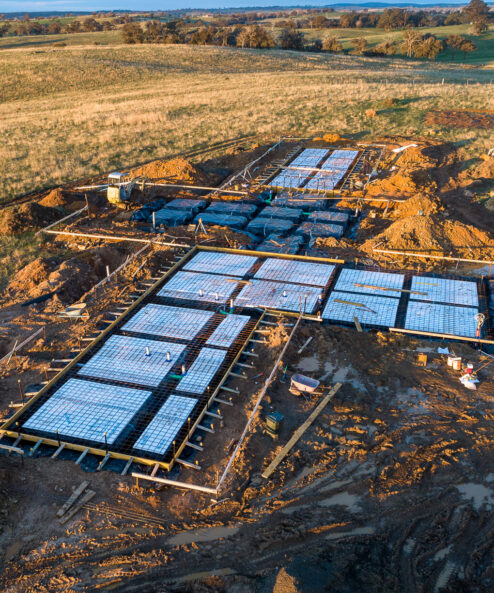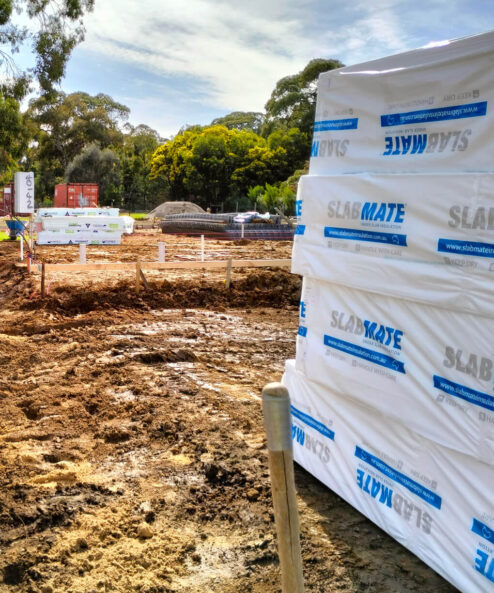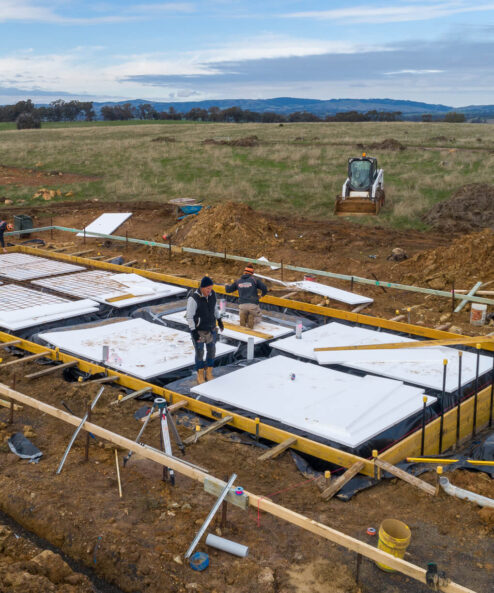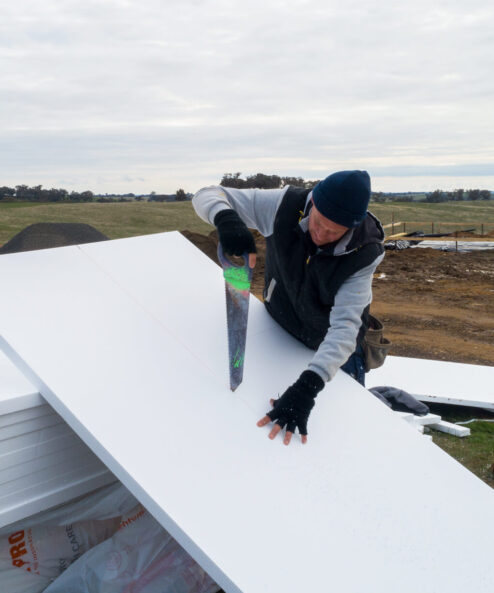Underslab Insulation
Insulating your concrete slab floor can improve energy efficiency in your home, prevent moisture issues and reduce noise transfer through the floor. Whether you live in a mild climate, experience low temperatures in winter or live through hot summers, underslab insulation will improve the total insulation of your home, keeping you more comfortable all year round.
Insulation for Under a Concrete Slab
Concrete slab insulation provides a thermal barrier to prevent heat loss and gain through the floor. It’s a cost effective solution to improve a building’s energy efficiency and indoor comfort year round.
The benefits of underslab insulation include:
Underslab insulation: a cost effective solution for your local climate
Concrete slab floors are a common choice for Australian homes because they offer high thermal mass and high thermal efficiency properties when insulated properly.
There are several types of concrete slab floors, including:
In a well-designed home, an uninsulated concrete slab will have a surface temperature the same as the ground to 3 metres depth. In mild climates, this may be appropriate if the rest of the home is well insulated.
However, in regions that experience cold winter temperatures or hot summers, insulating the slab – especially the edges – is essential.
Concrete roofs should also be insulated with high performing products to improve the building’s energy efficiency. If in-slab heating is used, insulating beneath the slab and at the edges is essential.
What is the best insulation for concrete slabs?
One of the most effective types of underslab insulation used by Australian builders is rigid foam insulation such as extruded polystyrene (XPS) insulation or expanded polystyrene (EPS) insulation.
XPS and EPS insulation have a closed-cell structure which makes them excellent at resisting moisture and heat transfer. They also have high compressive strength which means they can cope with heavy loads. Rigid foam board insulation is highly durable and typically lasts the lifetime of the building.
For more information about insulating your floor, read our guide to the best underfloor insulation in Australia.
Maximise your energy savings with total home insulation
A well-insulated concrete slab will improve your home’s energy efficiency and save you money on your energy bills – but to experience the maximum benefits that insulation can offer, it’s important to insulate your entire home.
Installing a combination of roof insulation, ceiling insulation, wall insulation and underslab insulation will prevent heat loss and gain throughout the year, and lower your energy bills over the lifetime of your home.
The best time to install underslab insulation is during the construction phase. Retrofitting slab-edge insulation may be possible in some existing homes.
If you are planning a new build or renovation, check out our guide to the cost of underfloor insulation to help with budgeting.
For project specific advice or more information about our underslab insulation products, get in touch with the Pricewise team today.



